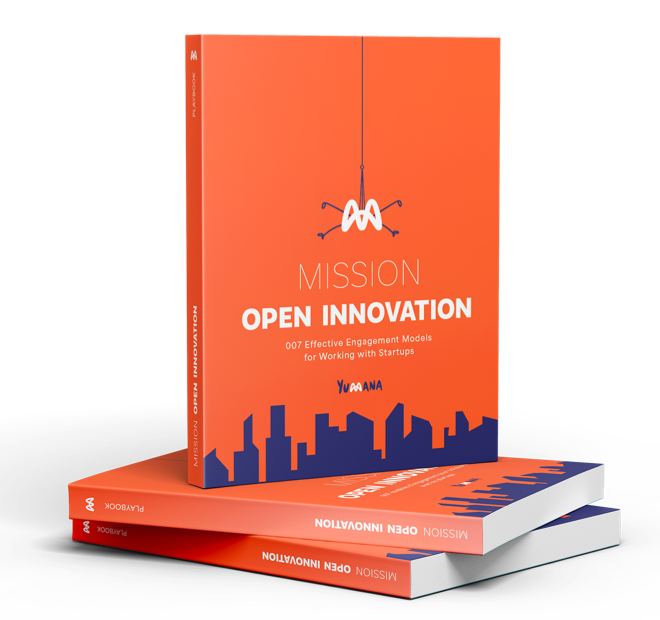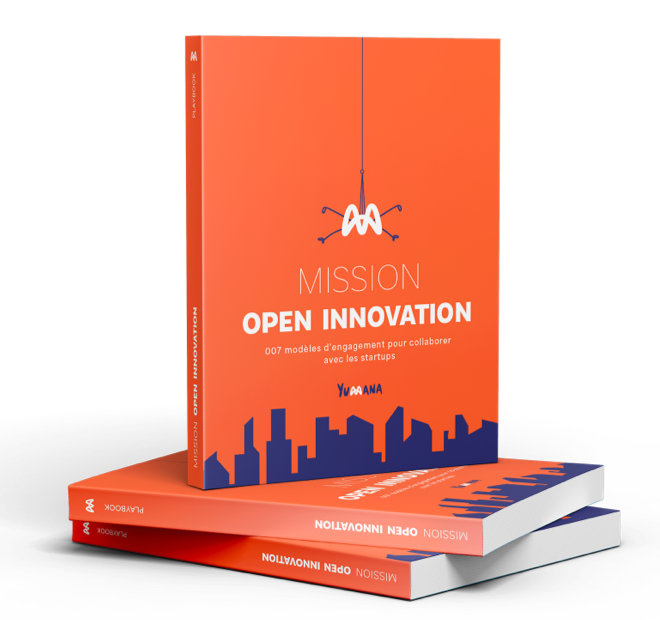Big corporations have everything it takes to be innovation powerhouses. They have vast resources, top-tier talent, and a firm grip on their markets. On paper, they should be unstoppable engines of progress.
Yet, when it comes to truly disruptive innovation, a paradox emerges. Everyone talks about it, everyone wants it, but the moment it’s time to act, resistance kicks in. Why? Because at their core, large companies are finely tuned machines, built for efficiency and optimization not for breaking the mold. And innovation, by its very nature, is about breaking barriers, shifting paradigms, and embracing the unknown. In an environment designed to minimize disruption, pushing for change is an uphill battle.
So how can corporations strike a balance between the need for bold innovation and the stability they rely on? Let’s dive into the key challenges, and the strategies to overcome them.

Fear of Failure: The Silent Killer of Innovation
Big corporations hate failure. They fear it, anticipate it, avoid it, and sometimes even suffocate it before it has a chance to happen. Every new project is scrutinized: market studies, focus groups, simulations… Everything is meticulously designed to minimize risk, to ensure an idea will work before it even truly exists.
The result? Innovation moves at a snail’s pace. Too cautious, too controlled, and often outdated before it even gets tested.
Startups, on the other hand, operate like real-time laboratories. Got an idea? Launch it, analyze, learn, adjust, pivot, abandon if necessary, but most importantly, iterate and keep moving forward. What large companies see—sometimes rightly—as a risk, startups call iteration.
Steve Blank, renowned entrepreneur, professor, and one of the founding figures of the Lean Startup movement, puts it best:
« In a big company, the fear of failure inhibits speed and risk-taking, whereas in a startup, it actually fuels velocity through a sense of urgency ».
Steve Blank, 2017
How to Overcome This Barrier?
The real question is not “How can we avoid failure?” but rather, “How can we create an environment that fosters exploration and learning to drive innovation?
One possible approach is to involve those who are often—wrongly—seen as barriers to innovation: support functions such as IT, legal, finance, and HR.
In reality, it is often the lack of dialogue with these departments that creates bottlenecks. Bringing them in from the very beginning of projects not only accelerates innovation but also ensures a secure framework for its development.
IT
When engaged early on, IT can anticipate technical and cybersecurity constraints, preventing roadblocks down the line.
Legal
Legal can facilitate experimentation by making certain processes more flexible, especially when collaborating with startups and external partners.
Finance
Finance plays a key role in securing dedicated innovation budgets and setting up evaluation criteria that prevent promising projects from being prematurely shut down due to rigid financial constraints.
Human Resources
HR can foster a culture of experimentation by incorporating initiative-taking and risk management into managerial evaluations, allocating time for innovation, and recognizing those who dare to explore new approaches.
Turning the fear of failure into a driver for learning is ultimately a matter of corporate culture. By integrating these levers from the outset, failure is no longer seen as a dead end but as a natural and necessary part of the innovation process.
The Perceived Lack of Legitimacy
R&D is an established institution. In many companies, it has been part of the organization since its inception. Its role is clear: explore, experiment, generate knowledge, and innovate. It enjoys implicit recognition and operates within a protected framework, with a dedicated budget, organizational autonomy, and a long-term development horizon.
Moreover, R&D does not function in isolation. It collaborates with other departments, particularly marketing, which often acts as a bridge between scientific exploration and market needs. This is not about subordination but about speaking a common language that facilitates alignment and the adoption of new advancements.
In contrast, Innovation Departments constantly have to justify their existence. They lack the same level of legitimacy and are often seen as detached from the company’s core business. As a result, they struggle to find their place and establish themselves as a lasting part of the organization.
How to Rebalance This Dynamic?
Why not apply the same philosophy when implementing a corporate innovation program? Why not grant more autonomy to initiatives that fall outside the traditional product framework but could be just as strategic for the company’s future?
In short :
- Grant innovation projects a degree of freedom similar to that of R&D.
- Establish a dedicated budget that provides a secure experimentation ground.
- Avoid demanding immediate results, allowing a pace that aligns with the nature of each innovation.
The goal is to formalize both a space and a timeline for innovation, a carefully structured innovation ecosystem!
Incompatibility with the Existing Framework
Building on the idea of a dedicated space and time for innovation, a realization sometimes emerges: some innovations simply no longer belong within the organization. Not because they lack value, but because they cannot thrive within the company’s existing constraints and structures.
Of course, this is not a failure. An innovation that flourishes in a protected environment may hit a wall when it needs to integrate into the organization. It may require more agility, a different market approach, or a business model that no longer aligns with the company’s core structure.
So instead of forcing a model that doesn’t fit, why not explore external opportunities or even let the innovation take its own path elsewhere?
| Comment transformer une impasse organisationnelle en opportunité de croissance pour l’innovation ? Face aux limites, plusieurs approches permettent de donner une seconde vie à une innovation ou d’en capter la valeur autrement. |
Venture Clienting: Sourcing Innovation Externally
Rather than trying to develop everything in-house, some companies are embracing a more pragmatic approach: acting as the first customer of promising startups. Instead of building solutions themselves, they identify external innovations and integrate them into their ecosystem as privileged clients.
This way, they leverage the agility and speed of startups without having to bear the burden of internal constraints and complex processes.
Excubation: Letting Innovation Gain Independence
Sometimes, an innovation born within a company outgrows its initial purpose. In such cases, rather than constraining it within corporate boundaries, it makes more sense to let it evolve externally. This is the principle of excubation or Venture Startup Studio: an internal project is spun off into an independent entity, often with the initial support of the company that nurtured it.
Safran applied this approach with Hapster, a startup that emerged from its intrapreneurship program. By excubating it, they enabled faster growth while still remaining its first client.
Not Invented Here Syndrome
Another Major Barrier: The “Not Invented Here” (NIH) Syndrome. An idea that comes from outside—whether from a startup, another department, or even a different subsidiary—is often instinctively seen as suspect or difficult to implement within the company’s own structure.
Even if it has already proven successful elsewhere, it is frequently rejected for political, technical, or cultural reasons. Instead of adopting proven solutions, companies prefer to start from scratch, wasting valuable time and resources in the process.
How to Move Beyond This Mindset
Rather than forcing the adoption of an external innovation, some companies are implementing a “off-the-shelf solutions” strategy. The idea? Instead of pushing innovation, they offer teams a catalog of tested, ready-to-use innovative solutions.
Ideas become tangible: they take the form of accessible products or solutions. Instead of imposing them, the company adopts a more open approach: “Here are all the available solutions. They’re ready for you to use. If you’re interested, you can explore, take what you need, and we’ll help you implement them. But nothing is mandatory.”
By letting departments and teams choose the innovations that interest them, they naturally take ownership of the projects, leading to smoother adoption and better engagement.
Conclusion
Innovation isn’t dictated; it’s cultivated. In a large organization, innovation doesn’t succeed solely through great ideas, but through the ability to create a viable framework for them to thrive.
Sometimes, this requires better structuring. Other times, it means letting go—accepting that some innovations will flourish better elsewhere or under a different model.
This is exactly where Yumana comes in. Not just as another tool, but as a catalyst for innovation, creating an ecosystem where progress doesn’t rely on a handful of motivated individuals but on a structured, scalable system. A system that allows ideas to emerge, be challenged, and ultimately succeed.
Ready to push boundaries? Connect with our Yumanists and discover how to structure, accelerate, and deploy innovation effectively.

CEO & Co-Founder Yumana




